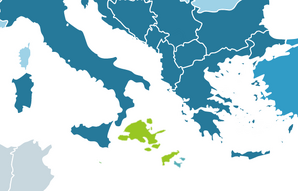The United Kingdom of Cattala is an independent constitutional monarchy comprised of seven provinces across six islands. The nation is located in the Mediterranean Sea, around 50km east of Sicily and 50km south of Italy proper. Its neighbors are Italy to the west and north, Tunisia and Libya to the south, Matinendian territories to the south-east and Greece to the east and north-east.
Flora and Fauna[]
Cattala has several forests that interlink, including the Bosco di Celeste which spreads across the north-west of the city. The largest forest is spread across the north-east of the main island, and surrounds the Seina region. The north of the country shares a lot of similarities with the southern tip of mainland Italy, and the west is home to Sicilian fauna.
Rivers[]
The island previously had main rivers that spread across the south and west of the island, such as the Lamini River that once flowed through Jennai. However severe droughts during the 17th century dried up most of the rivers, and during Victorian rule, those that remained were linked into canal systems that cover Celeste, Jennai and Calora. The Fiume Callore was turned into a canal during a drought in the 1820s, to increase irrigation and protect water supplies. In Ontano and Ionia though, rivers such as the Fiume Ontano and Fiume Romeggi remain flowing naturally with little human influence.
Climate[]
Cattala has a more erratic climate than Sicily, with mild, wet winters and hot, dry summers.
| Month | January | February | March | April | May | June | July | August | Sept | Oct | Nov | Dec |
|---|---|---|---|---|---|---|---|---|---|---|---|---|
| Average High (*C) | 17 | 16 | 18 | 20 | 24 | 35 | 36 | 39 | 33 | 25 | 21 | 14 |
| Average Low (*C) | 9 | 10 | 11 | 14 | 17 | 20 | 24 | 26 | 20 | 18 | 14 | 11 |
| Precipitation (mm) | 82 | 67 | 64 | 50 | 30 | 12 | 5 | 8 | 30 | 78 | 85 | 94 |
History[]
Pre-1800s[]
After the last Ice Age, Cattala was cut off from the rest of mainland Europe, as it lost its land link with Sicily and mainland Italy. In around 750BC, the Greeks settled a small colony on Cattala’s east coast, and farming became a strong industry in the colony. In Roumeli, the Greek influence was much higher than on Cattala's mainland. However after the Romans took over both Sicily and Cattala in around 200BC, the country became part of the Roman Empire, and remained so for 700 years. Christianity amongst the largely rural population of the country grew rapidly, but growth was mainly limited to the south-west and far eastern regions of the country, with the centre a deeply forested area that was uninhabitable. The name Cattala was chosen for the country, because many Roman soldiers incorrectly believed they were actually in the Spanish region of Catalonia after being misinformed by their generals.. After the fall of the Roman Empire, the control of the province changed hands many times until the Byzantine Empire took control of the islands in 535 AD, and remained so until the 10th century. After Sicily fell under Arab control, Cattala was led for the first time under the control of King Roger Celestine, who increased agricultural growth in the country until his death in 1021. His son, William the First, led the country to a stronger independence from Sicily, which ultimately resulted in the Kingdom being independent for another eight centuries. Growth remained stable until the 19th century, with Roger and William’s family remaining in charge of the country. Cattala’s population had risen steadily from around 20,000 in the 11th century to around 600,000 in 1800.
1800 - 1814[]
In the first decade of the 19th century, peace in Cattala remained despite ongoing wars across Europe, mainly fuelled by Napoleon Bonaparte. The House of Celestine, having ruled for nearly 800 years now, had named and created the capital city after their surname and had built a high-class Mediterranean city home to around 50,000 aristocratic families and foreign diplomats. Much of the population lived in farming communities spread across the country, from the southern Ontano Island, up to the eastern Almae province and along the coast up to the military base of Porto D’Italia which was commissioned by the current King, Harold.
At that time Calora was a port town, home to fishermen and the middle classes of Cattalian society. Jennai was a booming industrial city, and was home to around a third of the population of the country. Most people lived in poverty in Jennai, and worked in factories producing clothing and goods to be sold in Celestine and in mainland Europe.
1814 – 1860[]
But the 1814 Treaty of Paris gave the British Empire control over the nearby island of Malta, leading the vast Royal Navy to threaten the shores of the Kingdom. Warships surrounded the south and east of the country, and King Harold was forced to abdicate the throne and Cattala was declared a British Colony, with the current Royal Guard (Head of the Government) being replaced by a Governor.
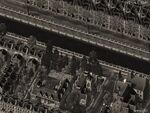
Vittorious was a sprawling, British town in Amosseri Province.
For the next half century, over 200,000 British citizens emigrated to Cattala from across the Commonwealth, and the population rose to 750,000. English became the main language of the colony, and British culture spread rapidly around the islands. The port in Calora became a hub for aristocracy arriving from the UK and Canada, and the town sprawled into a vast city and moved further into the countryside. Ontano Island’s agricultural industry boomed local delicacies became popular with the wealthy immigrants, and the island was renamed as two villages were created – Aldoak and Brunswick.
Porto D’Italia was closed by the British navy, and much of Cattala’s military was relocated to the British base in Malta, whilst Jennai continued growing as British industrial magnates invested in railways and manufacturing in the city and the population rose above the 200,000 mark. However, neighbouring Celestine had lost its status as the seat of the Royal Family, and investment moved away to the more desirable cities of Calora and Jennai, which resulted in the population falling and the city losing its aristocratic status.
1860 – 1900[]
However the age of imperial expansion in Cattala shuddered to a halt in 1860 when Italian nationalists, buoyant after seizing control of the Kingdom of the Two Sicilies earlier in the year, invaded from Ontano Island and Calora Harbour, destroying all of the villages and towns in the southern islands, including Brunswick and Aldoak. Calora Harbour was captured and shut down by the Italian Navy, as the British forces rested in Malta, unaware of the ongoing situation. Within a week strategic locations across Cattala were under Italian control and a treaty was signed with the furious British Crown to hand over the dominion to the Kingdom of Italy and the Governor was hung.
But the son of King Harold, Prince Amadeus, attempted to gather a military to fight off the Italian invaders and protect the chance of his family returning to power. But Amadeus was nearly 50 when the Italians invaded, and his small militia was vastly outnumbered. Public support in Celestine and Calora was high, and the King of Italy was concerned of a possible backlash if the deposed royal family was defeated by force. So a peace treaty was signed, and a small province was given to Amadeus along the Celestine town border, ultimately controlled by the Italians though.
The end of British rule was abrupt and shocking for those that moved to Cattala from the rest of the Commonwealth. A vast majority of the trade from the islands was with the Empire, and over 50% of the population became unemployed within the first decade of unification with the mainland. Agriculture was severely damaged by droughts throughout the early 20th century, which crippled the economy and poverty spread rapidly across Cattala and Celestine. Calora Harbour closed down, Jennai became a slum city for hundreds of thousands of unemployed poor and the only successful area was the military base and capital city, the rebuilt Porto D’Italia, now located in the south to fend off any invasion from Malta.
1900 - 1939[]
Prior to the Great War, Cattala continued to be under strict Italian rule, which continued to cripple the economy and faith in the Government continued freefalling. In 1912, many Cattalians left the country to move to the newly-captured island of Rhodes, now a strong ally of the country. During World War One however, all young men were drafted into the Entente, which led to vast casualties for the Cattala Regiment. The losses
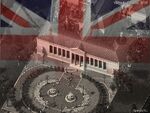
The Union Flag flying over Victoria Palace was the symbol of Cattala's revolution.
were atrocious, with over 100,000 men killed, missing or left behind. The outrage that had been boiling up for generations bubbled over, and riots were reported across the country. The President of Cattala, who simply reported back to Rome and not the people, was captured and burnt to death, over 50 police officers and troops were shot dead during the winter of 1917/18 and the Union Flag, a symbol to the impoverished Cattalians of a brighter past, was hoisted above the former Royal Palace, Victoria Palace, in Celeste, and Prince Amadeus’ son took the throne as King Charles III.
The economy struggled through the first decade of the 20th century, and slowly grew in the second. After the war, the population began falling as the remaining wealthy families left; fearing Italian occupation again and the ratio of men to women became increasingly unbalanced. King Charles the Third pushed for assistance from the British Crown, but the rapid decolonisation of the Empire resulted in little assistance from London. Harvests and the weather picked up again during the 1930s, and many rural communities benefited from the new generation not leaving for the slum cities, as thousands decided to stay at home as rumours of cholera and disease along the coast kept them away. Celestine once again became the capital city, and the rebuilding process began on the near-abandoned province. But the next war, would be even worse for the country.
1939 - 1945[]
The beginning of World War Two unnerved many Cattalians, with tens of thousands more fleeing the country. For the first year very little happened to the country, and many thought that the war wouldn’t reach them. However in 1940 hundreds of Italian bombers attacked Celestine and destroyed the military base to the north of the city, wiped out the southern harbour and severely damaged over 4000 homes, shops and Government offices, including the Parliament. German U-Boats and Italian naval submarines surrounded Jennai City and threatened to flatten the biggest population centre in the country unless King Charles surrendered.
The King evacuated his family to a small harbour in Porto D’Italia where they were secretly picked up by a small British plane, and taken to a North African military base before heading to exile in London. Charles the Third was flown to Rome aboard Royal Cattala Airways flight SFTPOC1, a special war coding that hid the message “Sacrifice For The People Of Cattala”, where he was reportedly hung. For the next three years Cattala was under the control of the Italians, who turned much of the countryside into air bases and training camps for Nazi and Fascist troops. An influx of German and Italian military personnel concerned the general population, especially in cities like Calora and Jennai which were expected to be prime targets for Allied bombing raids.
As the war continued, British and American forces battled the axis frontline in Africa, and in 1943 the Italian troops were pushed back into Cattala where hostile and impoverished islanders assisted the allied soldiers with medicine, food, shelter and ammunition as both the Amadeus Resistance Army (named after the anti-Italian prince) and the British 8th Army battled with the fascists for months until the withdrawal when the British/Canadian/American coalition moved into Sicily on July the 10th 1943.
The former colonial master had, for the second time in 50 years, rescued Cattala from Italian annexation. Propaganda posters were shown across the UK and Cattala depicting a triumphant Britannia rescuing a near-death Catherina (national personification) from a furious and vast Italia, who is wearing the Nazi colours.
1945 - 1958[]
The end of the war signalled the beginning of a decade-long rebuilding period for Cattala. After the war, much of the island’s infrastructure had been destroyed by bombing and the German retreat. The country was deeply impoverished and many thousands of children did not get a primary school education during the 1940s due to the war and the rebuilding process. The Prime Minister at the time was Lord Chancellor Harrison, who visited London on several occasions during 1945 and 1946 as discussions with Clement Attlee over the future of Cattala continued.
Attlee and his British Government agreed with Lord Harrison that the people of Cattala should choose whether or not to rejoin the newly-created Italian Republic, or reinstate a monarchy. The latter was always seen as more popular, due to strong hatred of Italy amongst the general public. Britain and America both assisted in the redevelopment, with hundreds of millions of sterlina loaned to the country during a ten-year period. Due to this vast investment, and the way the British troops were sacrificed to free the island from occupation, England was seen as the saviour of the nation and the English language became extremely popular, an effect that led to Cattala becoming an English-speaking country.
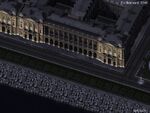
Parliament was re-opened in 1951.
By 1948, Celestine had been partly rebuilt, under the new name of Celeste, and over a million buildings rebuilt or restored. Jennai’s ports were once again operational and entirely new residential complexes were built in the destroyed city centre. Calora was also assisted, as homes were saved and repaired after bombing raids broke seawalls and canal sluices, which resulted in flooding across the city. All of the major military bases were shut down.
The Referendum of 1949 gave the citizens a vote on whether to bring back some form of monarchy, an independent republic or join Italy. 91% of the voting population chose to bring back a monarchy, with less than 1% voting to join Italy. However the entire Celestine family had been killed by Italian fascists during 1940 and no immediate descendent could be found in the country. Fortunately, Prince Amadeus’ great-nephew had moved to England in 1938, before the outbreak of the war. Marco Bonnicelli became the first King of Cattala from outside the Celestine family name, and received a hero’s welcome when he arrived in Calora before travelling to Celeste for his coronation. During his reign, Bonnicelli received permission from Pope Pius XII to reconstruct the Cattalian Catholic Church, a historic faith that is extremely similar to the Roman Catholic Church, but is more national-centred and sees the Holy See and the Anima Divina della Chiesa as the two leaders of the faith.
During this period Cattala became a United Kingdom, and became a religious democracy when King Marco took the throne and the Cattalian Catholic Church was revived.
1958 - 1987[]
The Kingdom underwent an economic revolution, following what some described as the 30-Year Revolution. Cattala, pre-war, had been a slowly-growing agricultural island, and had struggled to introduce industry and big international corporations to the region. However once the political system was stable and the British officially released the country, the population grew rapidly and tourism from continental Europe rose sharply as aviation continued to advance.
With King Marco at the helm of the Royal family, the political system continued to evolve and the King pushed for growth of public services and job creation outside of agriculture. The position of Lord Chancellor was changed to “Lord of Celestine”, who took over more of a prime ministerial position than before. The first female leader, Lady Fernandez, led the Government for 6 years and when she stepped down in 1963, the opposition Democratic Party took the biggest share of the vote in the country’s history, a record that still stands today. King Marco died in October of 1963 at the age of 66.
1964 was a year of new beginnings in Cattala, with a new Lord Celestine and a new King, Roger the 16th. Roger never married and led a reclusive life as King, but continued pushing the Government to nationalise industries like the railways and aviation, which has resulted in decades of profits for the country. The economy continued growing rapidly during the 1960s, and the cities of Celeste and Calora expanded rapidly with population in both rising by over 50,000.
In 1970, the country chose to bring the Catholic Conservative (Cattolici Conservatori) party back into power, but a battle for control of the party resulted in a disastrous attempt to destabilise the Government from within. Lord Bertollini held onto power until May of 1971, less than 8 months into his tenure. The election resulted in a shocking blow for the party, who didn’t regain power again until 36 years later.
King Roger XVI died of a heart attack in February 1987, with no son or daughter to take over. His sister, Elizabeth of Almae became Queen, and at the age of 60, is the oldest Royal to take the Crown in Cattala’s history.
1987 - 2000[]
With Queen Elizabeth of Almae in control of the Kingdom, economic and political stability reigned supreme during the next decade. Despite her age, Elizabeth worked hard to protect the nation and distanced herself from political affiliation, which her brother had failed to do. The population of Cattala continued to rise, as cities like Jennai and Celeste expanded and modernised, with Central Business Districts being redeveloped in all the major towns and cities.
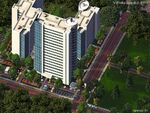
New hospitals were built across Cattala in the 1990s.
Church attendance, education and healthcare all rose in the 1990s, and the national GDP grew by an average of 2.1% each year. The Democratic Party held power until 1991, with just three leaders from the same party dominating politics between 1971 and 1991. The fall of the Catholic Conservatives continued, and the rise of the People’s Party resulted in a 10-year period of public sector growth, with a sharp increase in spending on the military and national protection. During the 1990s, support for European integration reached an all-time low and protectionism against the EU rose. Economic growth stumbled in 1998 and 1999, when growth of -1% during the latter year resulted in the downfall of the Government two years later.
Queen Elizabeth of Almae died in 1994, and was succeeded by her popular daughter Princess Alexandra, who became Her Royal Majesty, Queen Alexandra the Fifth. Alexandra was more impartial about politics than her mother, but was known during her early years as Queen to question the role of the European Union in continental society today. She married Prince Luke of Rhodes in 1990, in a wedding that cost nearly £700,000 but was broadcast around the world, as it united two islands, Cattala and Rhodes, through marriage. Queen Alexandra left the international stage briefly between 1993 and 2000, as she gave birth to and brought up three children.
Politics and Government[]
See the page Politics and Government in Cattala for more information.

Amosseri Province is the political centre of Cattala, and home to the Royal Family.
Cattala has one national Parliament, located in the capital city, Celeste, and seven provinces, each with its own Parliament and regional government. The head of state is Queen Alexandra the Fifth. The current head of Government, the Lord Celestine, is Lord Anthony Secolo of the Cattolica Conservatori party.
The Royal and Holy Majesty[]
The head of state in Cattala is the Regal Monarch, currently Queen Alexandra V. Her main duty is to seal elections, where she decides whether a candidate is ready for the role of Lord Celestine. She can dissolve Parliament at any time she wishes, and also has signs legislature into law and can veto them. The country cannot go to war without the Royal Majesty's approval, which was refused during the Iraq War. She opens and closes Parliament each year, and often visits the Twin Chambers during important sessions. Her Royal Majesty is the joint Head of the Cattalian Catholic Church, and the nation's main representative abroad, and has made 6 international tours in Summer 2010 alone. The position is hereditary and for life; however, Parliament can vote to abolish the Royal Family and declare a referendum on getting public support for the move. It would require a 2/3 majority in both Chambers, and then 2/3 in the public referendum. The Royal Family is funded through the Blessed Charter, a tax paid by the Cattalian Church and the Charter Society, which includes 30 Dukedoms and 13 Earldoms. The Queen does not belong to any political party, however King Roger XVI was known to be supportive of socialist views, shared by the Democratic Party at the time. Since the House of Bonnecelli took power, there have been 4 Regal Monarchs, with Queen Alexandra V being the 4th Regal Monarch. She was crowned in 1994. However between the 11th and early 19th century, there were dozens of kings and queens under the House of Celestine.
Economy[]
Cattala has a private sector focused economy, however there remains a vast amount of wealth and investment in the public sector, and much of the country's infrastructure remains nationalised. 64% of the country's GDP is produced by the services sector, mainly in the southern provinces of Amosseri and Jennai. Manufacturing and pharmaceuticals make up a further 30% of GDP, and also employs 60% of the population. In 2010, Cattala's GDP was $96,095 million.
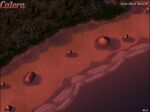
Tourism is one of Cattala's biggest industries.
Cattala's economy is defined be an east/west economic divide - in the west, heavy industry, services and international tourism are the main sectors, and over 80% of the country's GDP is produced west of the Bosco di Seina, in Monte Calida. In the east of Cattala, agriculture, light industry and tourism are the main sectors, and much of the country's food production takes place here. Lessito Province contains some of the region's most fertile soils and the Kingdom has reached near self-sufficiency in recent years thanks to the growth of agriculture in this region, despite it only producing 5% of national GDP. Industrialisation, colonisation and closer proximity to Italy and Africa are the three main reasons for the distortion in economic activity.
Jennai is Cattala's fiscal and economic capital, with over 40% of the population living in the province and the largest financial district and container port both being located in the city. Following the Second World War, Jennai was the central city to the redevelopment of Cattala and the entire country's economic stability is dependent on Jennai. The country's unemployment rate reached a historic low of 4.2% in 2005, but since then it has risen to the current level of 7.5%, which is lower than Italy's, but slightly higher than Malta and Cyprus. Cattala lowered it's income taxation rates in October 2010, and now those earning ₴30,000 per annum pay no tax. The highest rate of taxation, 40%, is charged on annual incomes of over ₴200,000. The average Cattalian earns just under ₴60,000 per year and therefore would be in the 20% tax bracket. The consumption tax rate, also known as VAT, currently stands at 13%, due to Cattala not being a member of the European Union.
Tax Rates[]
VAT: 13%
Corporate Tax Rate: 20% Income Tax Rate Thresholds:
| Tax Rate | 0% | 10% | 15% | 20% | 25% | 30% | 35% | 40% |
| Minimum Income | N/A | ₴30,001 | ₴45,001 | ₴60,001 | ₴75,001 | ₴90,001 | ₴110,001 | ₴130,001 |
| Maximum Income | ₴30,000 | ₴45,000 | ₴60,000 | ₴75,000 | ₴90,000 | ₴110,000 | ₴130,000 | N/A |
Transport[]
Road[]
Most Cattalians travel by cars in their everyday lives. Cattala has four motorways, including the Celeste-Jennai M1, the Celeste to Calora M2, the Calora-Jennai M3 and the Calora-Seina-Almae M4. There are plans to construct a fifth motorway, between Jennai and Cape Almae. Around 65% of Cattala's cars are diesel, and around 78% of all new cars bought in 2009 were diesel. Taxation on unleaded petrol rose by 15% between 1985 and 2002, which now adds 35% to the price of raw petrol. However diesel taxation is at around 19%, due to it being a more economical fuel. LPG is not taxed for cars, and plans are afoot to build over 1300 electric charge points in Jennai alone over the next five years. Analysts predict that by 2015, electric and hybrid vehicles will be around 40% of Cattala's car market, compared to a 10% prediction for the United Kingdom.
Rail[]
Most of the country's transportation networks are owned by the Government. The railways department is known as the Ferrovie corporation, and runs highly profitable lines such as the inter-city tracks between Calora, Celeste and Jennai. 65% of Cattala's railways are electrified, with plans to electrify the rest by 2020. There is no High Speed Rail in the country at the time, although with Italian plans to connect Sicily to the continental HSR network, the possibility of superfast train travel across Cattala is likely by 2016, according to analysts. The Government pledged £60m towards building the PS1 network between Jennai and Cape Point, on which Ferrovie's Pendolino trains could travel up to speeds of 135mph, the fastest speed ever achieved on the island. Currently, the speed is set at 100mph on all tracks, until PS1 in completed. Plans are also ongoing to expand the intercity lines between Calora, Celeste and Jennai, with a possible High Speed Rail link using the British Javelin sprint train, to link the three central cities with over 5 trains per hour. In rural areas, railway is expanding rapidly as speeds increase, with a predicted rise to 110mph on the Jennai-Cape Point line by 2012. The Ferrovie Railway Review (FRR), which has been delayed since 2008, is currently being written ahead of a release later this year.
Aviation[]
Energy[]
In the past, nuclear and natural gas powered much of Cattala, however in recent years huge Government investment in solar energy has resulted in 12% of the country's energy needs coming from domestic solar production, and the Seina Fieldways Solar Station, in Central Cattala province. Until recently, over 40% came from natural gas imports, with another 40% coming from coal and oil imports. A £2million investment in wind energy, in a joint venture between Cattala and Shushtrepistaz, means that by February 2012, over 34% of the country's electricity, around 3.6 GW, will be produced by a four-part wind network, spread across the Ionian Islands, Quentin, Ontano and Kallaghan. In November 2010, a 600MW triple-wind network will be completed in northern Ionia, the first of its kind in Cattala. Investment in Nuclear energy is also rapidly increasing, with coordinated development with the Atlantic Federation leading to a possible nuclear grid powering the whole of Celeste by 2017. The decommissioning of Celeste Nuclear Station in the Autumn of 2010 means the country no longer has a nuclear power plant operational. Discussions between the regional governments of Almae-Ontano and Central Cattala are ongoing on setting up a new ElectRoad network between Cape Almae and Seina, which would carry electric vehicles on a vehicle train at around 90mph whilst charging them, so that the cars wouldn't need to stop for a charge. This would mean long-distance travelling in an electric vehicle would be possible today, rather than 10 years time. It would connect to the Cape-Seina motorway and railway network.
Demographics[]
| Race/Ethnicity (2010) | |
|---|---|
| Caucasian | 77% |
| African | 14% |
| Indian (Subcontinent) | 4% |
| Latino | 2% |
| Asian | 2% |
| Other | 1% |
According to the 2010 census, the population of Cattala is 2,020,153. The kingdom is highly diverse, with many recognized ancestry groups making up significant portions of the population. Most Lower Columbians are of European descent; English, French and Swedish Columbians are the country's three largest ancestry groups. The largest minority group in Lower Columbia is the East Asian group, with about half of those with East Asian ancestry coming originally from Japan. There are an estimated 347,000 Lower Columbians of indigenous ancestry, of whom about 232,000 have exclusively indigenous ancestry.
Language[]
| Languages Spoken (2010) | |
|---|---|
| English | 98% |
| Italian | 91% |
| French | 41% |
| Spanish | 29% |
| German | 26% |
| Other | 22% |
English is the most spoken language in Cattala, with 98% of the population speaking the language that was bought to the island in the colonial period, and revived and made popular post-war. Italian remains highly spoken, being compulsory in all education levels up to college, and the large Italian community that remains in Cattala. French, Spanish and German are also popular. Arabic and Portuguese are also spoken by nearly 20% of the population.
Religion[]
| Religious Beliefs (2010) | |
|---|---|
| Christian | 93% |
| Cattalian & Roman Catholic | 84% |
| Protestant | 6% |
| Other Denominations | 3% |
| Non Religious/Atheist/Agnostic | 2% |
| Islam | 4% |
| Other | 1% |
Cattala is, and always has been, a deeply Catholic country. During the Middle Ages, the Cattalian section of the Catholic Church broke away from the main R.C community and formed the Cattalian Catholic Church, which was revived in 1959. The heads of the C.C.C are the monarch, currently Queen Alexandra V, and the Anima Divina della Chiesa, currently D.V Bruno Amana. He is basically the Cattalian version of the Bishop of Rome - he is the head bishop of all of Cattala and is elected by the Divine Order, all of the bishops of Cattala - there are no cardinals. Due to 93% of the population being Christian, there are only small numbers of other religious communities in the islands. The second largest is the Protestant community and the atheist/agnostic minority is the fastest-growing group. Early in 2010 religious tensions rose when the Government restricted the construction of new religious buildings with new regulations and two Muslim garments - niqabs and burkhas - were outlawed. This led to angry responses from both Cattalian Muslims and Islamic countries globally. However the bill was passed through parliament and the Foreign Minister claimed that "the Burkha and Niqab are symbols of the oppression of Muslim women".'Support amongst the general population was high, and other countries, including Rhodes, copied the measures introduced.
Education
There is no public education in the normal sense of the term below the collegiate level in Lower Columbia; most primary and secondary schools are officially charter schools, receiving funding from local governments, but with no mandated curriculum or frequent oversight. In effect, each primary and secondary school is administratively independent and run almost exclusively by its own principal and board of directors. Parochial schools are permitted to receive governmental funds if they operate under a charter. School attendance in Lower Columbia is not mandated by the government, but even most entry-level jobs in the country require either a high school diploma or regularly-submitted proof of progress toward earning such a diploma. Approximately 19% of Lower Columbian children attend a private school of some sort, while 6% are completely homeschooled.
Aside from private colleges and universities, most institutes of higher learning are government-run. There are many community and trade colleges in the kingdom, which are run by either state or municipal governments. Every state maintains its own system of universities, typically with multiple campuses. There is also one university system, Royal University, which is run by the federal government and receives a large endowment from the royal family. Among Lower Columbians at least 25 years of age, 87% have earned a high school diploma, 62% have attended some college, 33% have earned a bachelor's degree and 12% have earned a graduate degree. Lower Columbia's basic literacy rate is about 99%.
Health[]
Lower Columbia has a life expectancy of 78.2 years at birth, a figure between those of the United States and Western Europe. The nation's infant mortality rate of 4.97 per thousand live births is similarly intermediate within the developed world. At 8.1 per 1,000 women, the adolescent pregnancy rate is among the lowest in the entire developed world, and is little more than a tenth of the adolescent pregnancy rate in the US; this extraordinarily low rate is commonly attributed to the higher rate of religious service attendance and the higher prevalence of religious education compared to most Western nations. Unlike its neighbors, Lower Columbia has kept abortion illegal nationwide.
Universal health care is a highly contentious topic in Lower Columbia. Currently, health care is not universal in the country, nor is it mandated. The political minority in Parliament has tried for decades to change the status quo, but to no avail. However, health care costs are typically lower than they are elsewhere, and most Lower Columbians have signed up for health insurance of their own free will. Employer-sponsored health insurance is freely available and frequently utilized by employed Lower Columbians.
Crime and law enforcement[]
Most day-to-day law enforcement in Lower Columbia is carried out by local and state police departments, with the Royal Police having a more specialized role. The kingdom's judicial system is built on common law, both at the federal level and in every state. Most criminal cases are tried before state courts, while federal courts mainly handle appeals from the state courts, in addition to certain crimes and challenges to the constitutionality of state or federal laws.
Lower Columbia has one of the lowest crime rates in AIN, a fact commonly attributed to the high funding which all police departments receive. Indeed, in some urban areas, the police can appear to be omnipresent due to the sheer number of police officers on patrol at any given time. Violent crime rates are especially low; nationwide, there were 0.9 murders per 100,000 people in 2008. This low rate has been steadily declining over the past 40 years.
With so few crimes committed in the kingdom, Lower Columbia has a low incarceration rate and a small prison population; fewer than 50,000 people, or 0.1% of the general population, were incarcerated at the start of 2010. Almost none of those incarcerated are juveniles, as there is hardly any youth-related crime in the country. This small prison population would likely be higher, though not by much, if the death penalty were illegal in the nation. Currently, the death penalty is a sentencing option for several federal and military crimes, in addition to certain high crimes in each state.
Culture[]
Lower Columbia's history as a haven for immigrants from across the globe has given it a rich and varied culture. As the largest ethnic groups in the country are English, French and Swedish, elements of those three cultures have mixed to produce the majority cultural traditions of the kingdom. In addition, Lower Columbians are fond of celebrating the traditions of its minority groups, and every major city has its own cultural center or museum that hosts traditional performances, holiday celebrations and ceremonies.
Popular media[]
Literature, philosophy and the arts[]
Food[]
Sports[]
Wiki Ideas[]
- WikiCities
- Provinces and Major Cities
- Seven Principalities War
- Union Positions (cabinet etc)
- List of countries, populations, cities etc
- Aristocracy
- Union Regions - Europe etc
| AIN Member Nations |
| Aleksania · Arcacia · Ascadylea · Atlantic Federation · Atrubia · Bangorai' · Bob · Ceara Islands · Corraile · East Rockcoast · Escambia · Fairview · Fornax · Hiigara · Hispania · Holidia · Hypertrophy · Illu'a · Lanaya · Lisieux · Lower Columbia · MiaTonium · Ollingdale · Petrova · Roanoke Island · Sarnia Islands · Shushtrepistaz · Tirnreich · Tongolia |


